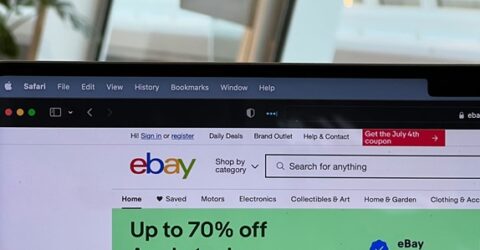How to make the most of eBay
It’s been with us for decades, yet many people still don’t know how to make the most of eBay – the world’s leading auction website

There’s a common misapprehension that online platforms and services are newer than they really are.
Many people might assume Microsoft Windows and open-world exploration games have their roots in this century, yet both can trace their lineage back to the 1980s.
Auction site eBay has also been around longer than you might expect – it was founded in 1995, when it was known as AuctionWeb.
For the first year, it was free to sell goods and services, though spiralling running costs literally put paid to that.
Today, eBay is much more than an auction site, though it remains peerless in its original role.
Getting down to business
Over the decades, eBay has acquired numerous other businesses, including Gumtree, Skype, StubHub and PayPal.
This gives the first clue that its scope as a consumer-facing platform extends far beyond reselling pre-owned goods.
Today, it is one of the world’s leading ecommerce sites, with a roster of daily deals on new products ranging from engine oil to clogs, from gazebos to laptops.
It trades in 190 countries or territories, with over two billion live listings at any one time and over 130 million active buyers.
This has enabled a wealth of sole traders to make the most of eBay. Known as resellers, over three quarters of them trade pre-owned goods, while homespun producers can sell new items directly.
Business users have four tiers of eBay Shop packages to choose from, with monthly prices ranging from free to £437, plus varying number of fixed price/auction-style listings.
This tiered service lets businesses grow organically over time. To make the most of eBay, any new enterprise should start on the lowest tier and only upgrade once necessary.
Costs and cancellations
It’s worth noting that eBay has been very proactive in terms of dropping services or practices it has lost faith in.
The ability to collect or spend Nectar points on eBay purchases was dropped at the start of this month, for instance.
Transaction fees once an item sells are 13.22 per cent for private users plus 30 pence per order (excluding clothes, which are free to sell).
You can also incur additional costs for image galleries, subtitles, reserve prices and promoted listings. However, most private sellers won’t need any of these to shift an item.
To sell effectively, write a detailed product description for the item you’re listing – an internet search for the model name might reveal manufacturer descriptions you can republish.
List it in the most appropriate category and add a compelling Title Case headline which describes the product succinctly (“Used men’s Hugo Boss brown belt 36” waist”).
Describe the product in as much detail as possible – its condition and age, any technical specifications and supplied accessories, whether you live in a smoke-free house, and so forth.
Acronyms help to simplify listings. BNIB means Brand New In Box, while BIN doesn’t mean something’s rubbish – instead, someone can Buy It Now.
Upload a few high-quality product photographs with good lighting and minimal shadows. Ensure any lettering on the item is legible and images aren’t blurry.
Weigh your item and use the Royal Mail website to calculate likely postage costs, adding these on at cost. Buyers rarely appreciate paying a postage premium, or hidden shipping costs.
General eBay tips
Reviews are central to eBay, building trust in sellers and proving that buyers are genuine and won’t repeatedly claim an item wasn’t delivered (registered deliveries often resolve this risk.)
Review every item you buy or sell to bolster your own reputation and remember that answering questions promptly will increase other people’s faith in you.
Embellish your profile with as much information as you feel comfortable sharing, hopefully reassuring anyone who’s debating whether to trust you with their custom.
Above all, be honest with people. Never overpromise and underdeliver; don’t describe products ‘as new’ unless they really are; provide product photos from every angle for clarity.
Be realistic about delivery timeframes, and don’t trust eBay’s own algorithm-powered timeframe suggestions – they’re often inaccurate.






